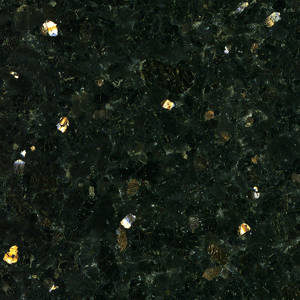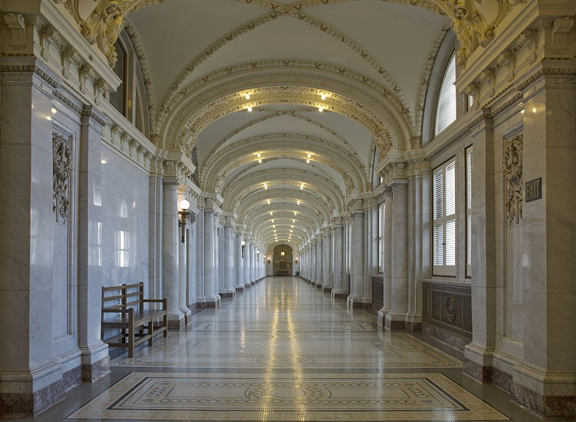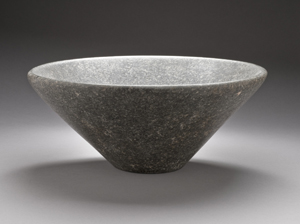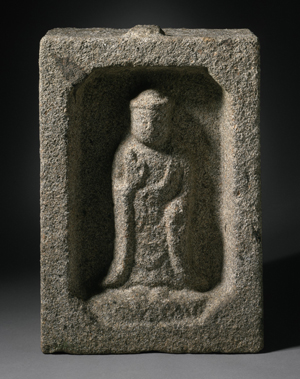What Is Granite?

Granite is a type of hard intrusive igneous rock, meaning it is formed from hot magma that crystallizes and solidifies beneath the earth’s surface over long periods of time. Granite can include a variety of different minerals and other substances, including the following:
- Feldspar
- Quartz
- Pyroxene
- Garnet
- Biotite
- Mica
- Sodalite
- Amphibole
- Epidote
- Tremolite
- Mafic minerals
Various combinations of these minerals and others can create artistic, colorful and enticing patterned effects throughout the granite. No two of these designs are precisely alike, which is one of the appealing aspects of this type of natural stone; if you install a granite countertop, backsplash or other architectural detail, you can take satisfaction in knowing that nobody else has one exactly like yours.
Granite Uses

Granite is an ideal building material for use in home construction and home renovations. This natural stone surface is useful for a wide range of different applications in the home, including tiles, countertops, vanity tops, backsplashes, shower surrounds, wet bars, fireplace surrounds, fireplace facing systems, wall cladding, stair treads, architectural details and even sinks.
Granite can be used for creating specialty furniture pieces such as tables and benches. People sometimes use granite for smaller home accents like coasters, outlet switch plate covers, cabinet pulls, figurines and carvings.
In office buildings, hotels, shopping malls and other commercial spaces, granite is suitable for flooring, and is sometimes installed in entries.
Granite is sometimes used in the construction and décor of public spaces such as courthouses and government buildings. It’s in use in various capacities in many of Washington, D.C.’s federal buildings and public spaces.


Granite also has outdoor uses and applications as well. Granite blocks are sometimes used for building exteriors. Granite makes lovely terraces, walkways, fountains, public monuments, paving stones, grave markers and cemetery headstones, among other things. It’s sometimes used for constructing bridges as well. One noteworthy granite fountain is the famous senate fountain in the park near the US Capitol building in Washington, D.C.
Artists and crafters prize granite for a number of creative uses. Granite is a suitable material for sculpture. It is the material that comprises the famous presidential sculptures at Mount Rushmore. Indeed, Granite has a long history of use as an artist’s material, as evidenced by many examples of artistic antiquities that can be viewed in museums, galleries and private collections.
Granite also makes lovely beads for creating jewelry and assorted beadwork projects.
Granite Tile
Granite tile is suitable to use for flooring, kitchen countertops, backsplashes and a variety of other applications.
Granite tile countertops have both advantages and disadvantages over granite slab countertops. One of the main advantages is cost savings; another is a wider range of design options.
Smaller, thinner pieces of granite are suitable for cutting tiles, whereas it takes much larger slabs to create kitchen countertops. Overall, granite tile countertops tend to include a lesser volume of stone than slab countertops, which can keep the costs comparatively lower. The smaller tiles also result in greater flexibility in many aspects of production; it’s easier to transport and ship small pieces of material, plus it’s easier and comparatively less expensive to warehouse it and store it before it reaches its final destination. These factors all contribute to the attractive pricing of granite tile countertops.
Granite tiles do need to be grouted. A resulting downside is increased labor intensity when it comes time to do maintenance on the countertop. It takes somewhat longer to clean a tile countertop. Since grout can be susceptible to deteriorating and staining, periodically the counter will likely need to be re-grouted.
Another important consideration is how to design the edge of a tile countertop. To deal with this challenge, there are retailers who make granite tile edge pieces available, and also retailers who make entire granite tile systems available.
The Look, Style and Appeal of Granite

Granite is extremely versatile. It’s suitable for use in everything from palaces to parking lots, and it can present a wide variety of different personalities that suit each application — from polished and prestigious to rocky and rugged.
Granite is available in a stunning range of colors, and it coordinates well with a number of different interior design styles:
- Contemporary
- Modern
- Transitional
- Traditional
- Eclectic
- Historic styles such as Rococo style and the Beaux Arts classical / neoclassical style.
Granite surfaces can differ greatly in appearance, depending on how they are cut, finished and maintained. For use in home interiors, granite is often polished and sealed, which creates an elegant, shiny surface. For exterior use, granite may be rough cut and left unpolished, which creates more of a rugged look and style.
Granite Colors

Granite is typically multicolored, with the color variations resulting from the various minerals that comprise each piece of stone.
- White Granite — Granite that is predominantly white, typically including significant amounts of feldspar or quartz in its composition. White granite may also include garnet, biotite mica or other mineral content. Click here to learn more about white granite varieties, and to see pictures of this stunning natural stone.
- Black Granite
- Blue Granite
- Gold Granite
- Green Granite (Verde Granite)
- Pink Granite
- Gray Granite
- Red Granite
Maintenance and Care of Granite
For most homeowners, maintaining granite is a relatively simple task. Granite floors, tiles and countertops need to be washed and / or disinfected as often as necessary to keep them clean and sanitary. Some granite surfaces need to be sealed, and then periodically resealed.
Experts disagree on how often homeowners need to reseal. My opinion is that each individual piece of stone has its own idiosyncrasies, which will determine the best schedule for re-sealing. If you have a denser slab of granite, you will likely not need to seal as often as if you have a more porous slab. The densest granite slabs may not require sealing at all.
Granite can be susceptible to staining if you don’t keep up with necessary sealing. Not all stains are permanent, and many can be removed from granite with a little effort.
Other than sealing and routine cleaning, granite generally wears well and doesn’t require much maintenance. This type of stone is not easily burned, marred, scraped or otherwise damaged.
Maintenance of granite in public structures can be a bit more challenging. To maintain historic buildings, it can sometimes become necessary to repair damaged joints where granite meets brick or other materials.
When the USA’s public granite structures in Washington D.C. need preservation or restoration, experienced masons are employed to accomplish this task. To perform needed repairs, masons must typically match the existing mortar color, and then cut, rake, clean and repoint any damaged joints using mortar and caulking compound.
References
- At the US Geological Services Website: Rocks
- At the Architecture of the Capital Website: Masonry; The Senate Fountain; and Beaux Arts Architecture of Capitol Hill
- At the Library of Congress Website: James R. Browning U.S. Court of Appeals Building, San Francisco, California, 1st floor corridor and 3rd floor corridor
- At the US Environmental Protection Agency (EPA) Website: Granite Countertops and Radiation
- At the Los Angeles County Museum of Art Website: Architectural Fragment,
Japan, 19th Century - At the Geology.com Website: Uses of Granite
- Creative Commons Photo License Details
Learn More About Building Materials
Learn More About Kitchens
- 8 Ways to Get the Best Value From Kitchen Renovations and Upgrades
- Kitchen Trends for 2018
- Kitchen Styles
- All About Kitchens
This page was last updated on 3-16-2018.
Granite
What is granite? What is it used for? What does it look like? Find pictures of this beautiful natural stone, plus answers to all these questions and more.
granite, what is granite, granite uses, uses of granite, uses for granite, granite definition, granite pictures, granite photos, granite colors, white granite, black granite, uba tuba granite, green granite, verde granite, gold granite, granite countertops, granite tiles, granite bowl, granite architectural fragment, granite care, granite maintenance, granite sealer, granite wall cladding